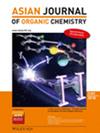2023-2024年药物合成连续流化学典型案例分析
IF 2.8
4区 化学
Q1 CHEMISTRY, ORGANIC
引用次数: 0
摘要
连续流化学作为药物合成领域的一项新兴技术和重要趋势,已越来越多地应用于学术实验室和小型工业车间,以生产各种化合物和中间体。与传统的批量生产方法相比,该技术增强了反应过程中的传热传质效果,从而减少了反应时间,产品纯度更高,质量一致性更强。此外,连续流技术可以精确控制反应参数,最大限度地减少中间分离和纯化步骤的需要,为化学药物的合成和生产提供了一个更安全、更高效、更环保的平台。在这篇简短的综述中,我们介绍并评估了2023年至2024年的典型案例,这些案例展示了通过流动化学实现的药物合成工艺的进步,强调了以连续流动方式生产活性药物成分(api)的显着优势。本文旨在为高效和可持续的药物生产提供有益的参考,从而在流动化学的帮助下重振该领域。本文章由计算机程序翻译,如有差异,请以英文原文为准。
Typical Cases of Continuous Flow Chemistry in Pharmaceutical Synthesis in 2023–2024
Continuous flow chemistry, as an emerging technology and a significant trend in the field of pharmaceutical synthesis, has been increasingly employed in both academic laboratories and miniature industrial workshops to produce various compounds and intermediates. Compared to traditional batch production methods, this technology enhances the heat and mass transfer effects during the reaction process, thereby reducing reaction times and yielding purer products with greater consistency in quality. Furthermore, continuous flow technology enables precise control of reaction parameters, minimizes the need for intermediate separation and purification steps, and offers a safer, more efficient and environmentally friendly platform for synthesis and production of chemical drugs. In this brief review, we present and evaluate typical cases from 2023 to 2024 that demonstrate the advancements in pharmaceutical synthetic processes achieved through flow chemistry, emphasizing the significant advantages of producing active pharmaceutical ingredients (APIs) in a continuous flow manner. This review is aimed to afford a conducive reference for efficient and sustainable production of pharmaceuticals, thereby reinvigorating the field with the aid of flow chemistry.
求助全文
通过发布文献求助,成功后即可免费获取论文全文。
去求助
来源期刊

Asian Journal of Organic Chemistry
CHEMISTRY, ORGANIC-
CiteScore
4.70
自引率
3.70%
发文量
372
期刊介绍:
Organic chemistry is the fundamental science that stands at the heart of chemistry, biology, and materials science. Research in these areas is vigorous and truly international, with three major regions making almost equal contributions: America, Europe and Asia. Asia now has its own top international organic chemistry journal—the Asian Journal of Organic Chemistry (AsianJOC)
The AsianJOC is designed to be a top-ranked international research journal and publishes primary research as well as critical secondary information from authors across the world. The journal covers organic chemistry in its entirety. Authors and readers come from academia, the chemical industry, and government laboratories.
 求助内容:
求助内容: 应助结果提醒方式:
应助结果提醒方式:


